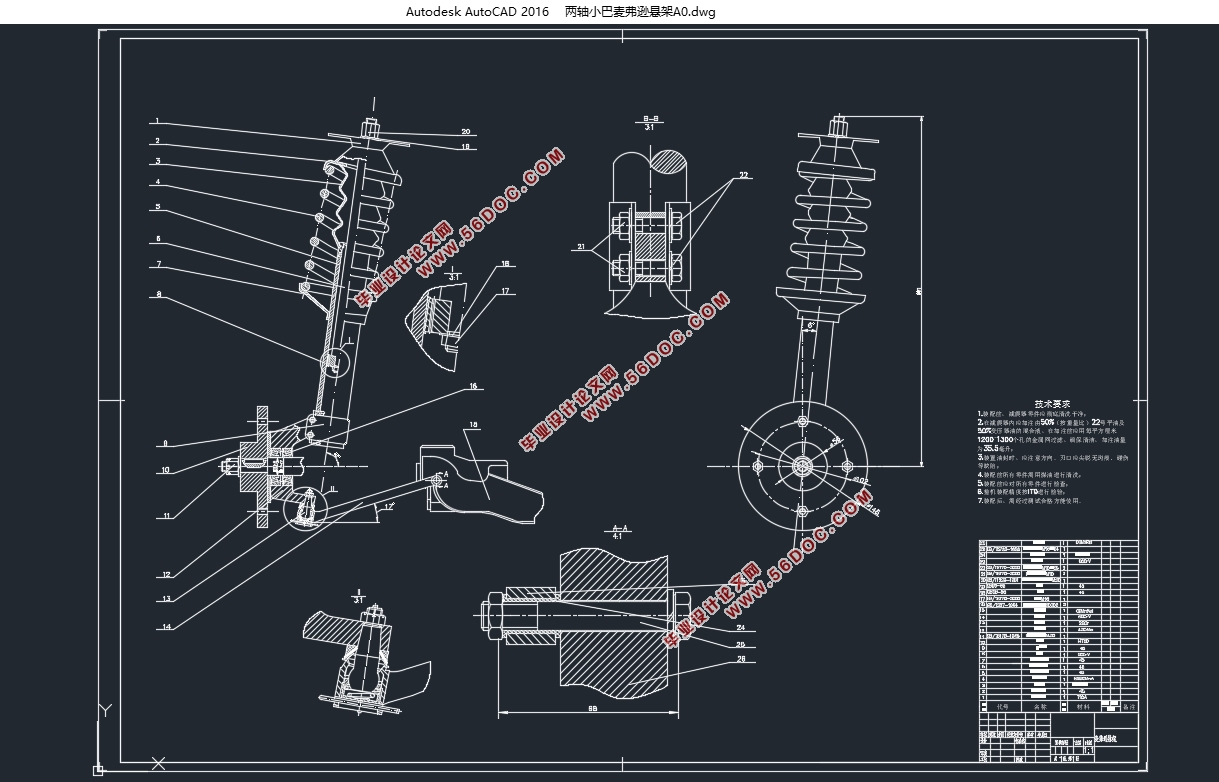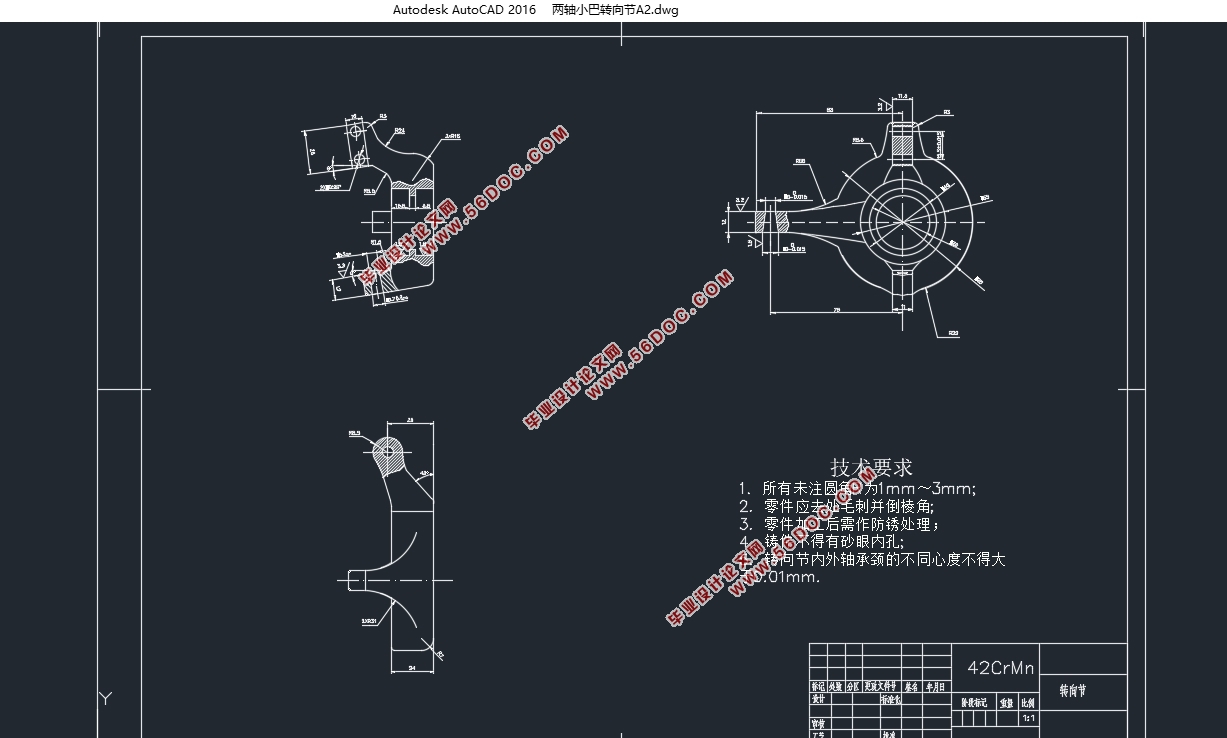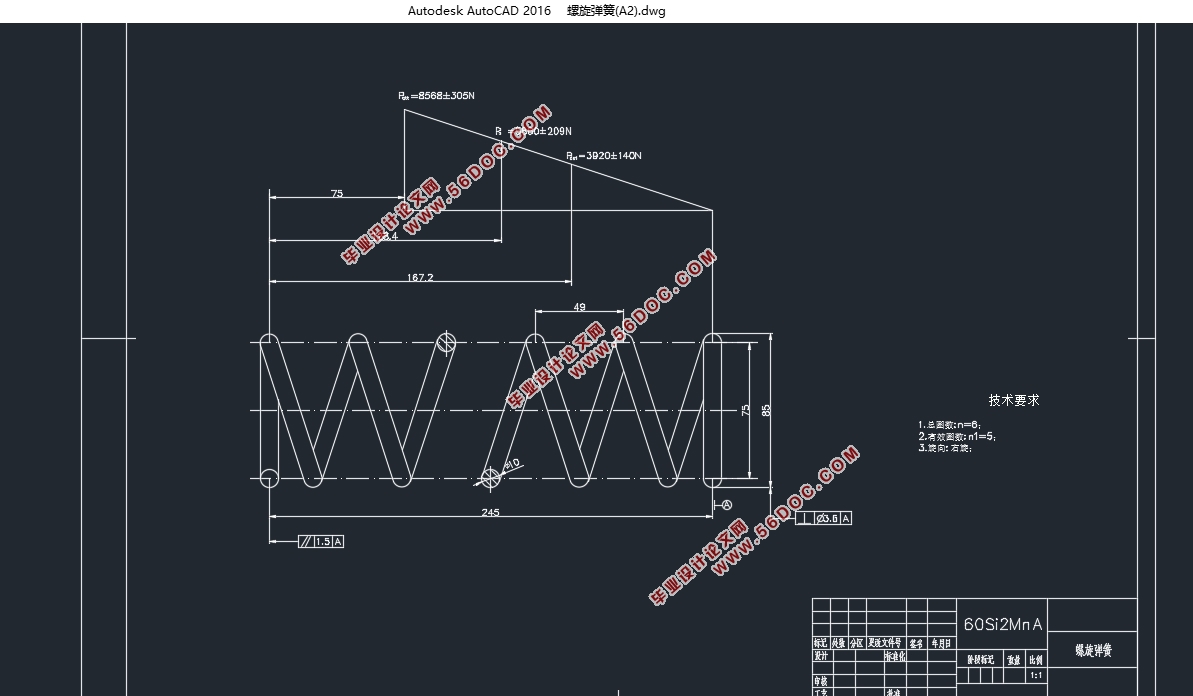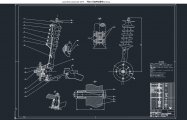两轴小巴平顺性计算及分析(含CAD图)(任务书,开题报告,文献摘要,外文翻译,论文说明书28000字,CAD图3张)
摘要
随着我国经济的快速发展,国民生活水平不断提高,时至今日,汽车已成为人们日常生活中最为常见的一种交通工具。从1886年第一辆汽车诞生算起,汽车工业已经经历了130多年的发展,汽车的行驶平顺性早已成为各大汽车生产厂家竞争的关键点。本文以两轴小巴为例,计算并分析其平顺性,对此类车辆及其他车辆的平顺性计算以及分析、改进具有重要参考意义。
本文首先介绍了汽车平顺性的意义以及国内外在此领域的研究现状;介绍了国内外有关车辆平顺性的评定标准及其发展历程,详述了由我国多个研究部门共同合作制定的国家标准,选定以国标GBT 4970-2009《汽车平顺性试验方法》所规定的汽车平顺性实验方法和评价标准为指导,进行两轴小巴平顺性计算及分析;介绍了路面不平度的基本概念及其功率谱密度这一统计特性,在综合分析比较了几种不同了路面不平度模型之后,选择使用滤波白噪声法建立路面不平度的时域仿真模型。在SIMULINK中建立了B级路面激励的时域仿真模型后,计算了该模型的几何平均值和功率谱密度,计算结果表明该模型符合国标要求。最后又建立了两轴小巴8自由度平顺性分析模型,列出了描述此模型的动力学微分方程直接得到车辆质心处的垂直运动方程,再根据理论力学相关知识推导出座椅位置处共9个方向上的线振动方程。以此为基础在SIMULINK中搭建了考虑悬架伸张行程与压缩行程具有不同阻尼系数的悬架仿真模型,参照国家标准搭建了三个频率加权滤波网络,最后将这些仿真模块拼装成两轴小巴车平顺性仿真系统,按照国标要求进行了两轴小巴车的平顺性仿真,完成了不同车速下的驾驶员位置处的总加权加速度均方根值的计算,并以此为基础分析了该两轴小巴的平顺性,根据分析结果对该两轴小巴的悬架以及座椅参数进行了适当调整,优化了其整车平顺性。
关键词:平顺性;路面不平度;加权加速度均方根值;悬架系统;固有频率
Abstract
With the rapid development of China's economy and the continuous improvement of national living standards, today, automobiles have become the most common means of transportation in people's daily life. Since the birth of the first automobile in 1886, the automobile industry has experienced more than 130 years of development, and the ride comfort of automobiles has become the key point of competition among major automobile manufacturers. Taking the two-axle minibus as an example, this paper calculates and analyses its ride comfort, which has important reference significance for the calculation, analysis and improvement of ride comfort of such vehicles and other vehicles.
Firstly, this paper introduces the significance of vehicle ride comfort and the research status in this field at home and abroad, introduces the evaluation criteria of vehicle ride comfort at home and abroad and their development history, elaborates the national standards formulated jointly by several research departments in China, and chooses the experimental methods and evaluation criteria of vehicle ride comfort specified in the national standard GBT 4970-2009 "Test Method for Automobile ride comfort". Guided by this, the paper calculates and analyses the smoothness of two-axle minibuses, introduces the basic concept of road roughness and its statistical characteristics of power spectral density, and after comprehensive analysis and comparison of several different road roughness models, chooses the method of filtering white noise to build the time-domain simulation model of road roughness. After establishing the time domain simulation model of B-level road excitation in SIMULINK, the geometric average value and power spectral density of the model are calculated. The calculation results show that the model meets the requirements of the national standard. Finally, an 8-DOF ride comfort analysis model of two-axle minibus is established, and the dynamic differential equation describing the model is listed. The vertical motion equation at the center of mass of the vehicle is obtained directly. Then the linear vibration equation in nine directions at the seat position is deduced based on the theoretical mechanics knowledge. Based on this, a suspension simulation model considering different damping coefficients of suspension stretching and compression stroke is built in SIMULINK. Three frequency weighted filtering networks are built according to national standards. Finally, these simulation modules are assembled into a two-axle minibus Ride Simulation system. The ride comfort simulation of two-axle minibus is carried out according to the requirements of national standards, and the ride comfort simulation of two-axle minibus is completed at different speeds. The calculation of the mean square root of the total weighted acceleration at the driver's position is carried out, and the ride comfort of the two-axle minibus is analyzed on this basis. According to the analysis results, the suspension and seat parameters of the two-axis minibus were properly adjusted to optimize the ride comfort.
Key words: ride comfort; road roughness; weighted acceleration rms value; suspension system; natural frequency
主要研究内容
(1)以两轴小巴为研究对象,建立两轴小巴车平顺性多自由度分析模型。
(2)参考GBT 4970-2009《汽车平顺性试验方法》, 确定计算并分析两轴小巴平顺性的研究方案。
(3)利用平顺性仿真分析模型,进行路面随机输入下的整车平顺性仿真与分析,得到两轴小巴车振动特性并分析乘员的舒适性。
两轴小巴参数表
满载质量 2500(kg)
质心到前轴距离 2.0228(m)
质心到后轴距离 1.8672(m)
二分之一前轮距 0.8855(m)
二分之一后轮距 0.9325(m)
俯仰转动惯量 9457.56
侧倾转动惯量 7038.20
质心到脚的垂直距离 0.2(m)
质心到座椅的垂直距离 0.4(m)
座椅质量 28(kg)
驾驶员质量 60(kg)
座椅刚度 9900(N/m)
座椅阻尼系数 260
前左、前右轮质量(单个) 40.5(kg)
后左、后右轮质量(单个) 45.4(kg)
前轮刚度 192000(N/m)
后轮刚度 192000(N/m)
前悬架刚度(单侧) 50400(N/m)
后悬架刚度(单侧) 45000(N/m)(空载),
80000(N/m)(满载)
前悬架压缩阻尼系数(单侧) 1350
前悬架伸张阻尼系数(单侧) 3180
后悬架压缩阻尼系数(单侧) 1350
后悬架伸张阻尼系数(单侧) 3666.67
注:表中未标明单位的数据皆采用国际标准单位。




目录
第1章绪论 1
1.1本课题研究背景及意义 1
1.2车辆平顺性国内外研究现状 2
1.3研究的基本内容、目标、拟采用的技术方案及措施 3
1.3.1主要研究内容 3
1.3.2技术方案及措施 3
1.4本章小结 4
第2章平顺性评价方法以及路面仿真模型 5
2.1平顺性评价方法以及标准 5
2.2路面不平度模型的建立 7
2.2.1路面不平度 7
2.2.2路面不平度时域模型 10
2.2.3基于滤波白噪声法的路面时域仿真模型 12
2.3本章小结 15
第3章两轴小巴平顺性分析模型的建立 16
3.1车辆振动模型简介 16
3.2两轴小巴的平顺性分析模型 16
3.3平顺性分析模型的动力学方程 19
3.4本章小结 21
第4章两轴小巴平顺性仿真分析 22
4.1悬架仿真模型 22
4.2频率加权滤波网络 23
4.3平顺性仿真分析 23
4.4平顺性仿真实验的振动响应量 35
4.5本章小结 39
第5章整车平顺性优化 41
5.1悬架系统模型及其参数分析 41
5.2“人体—座椅”系统参数分析 43
5.3悬架以及座椅参数的适当调整 44
5.4调整后的整车平顺性 45
5.5本章小结 48
第6章总结 49
参考文献 50
致谢 53
|









